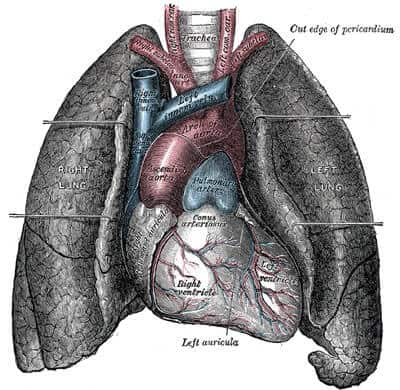Researchers led by a team at the University of Illinois at Chicago, have identified a novel role for a signaling mechanism in lung cells that permanently places them into a state of suspended animation called senescence. Alive but unable to do much of anything, including divide, senescent cells cannot become cancerous. Drugs that can induce senescence through this signaling pathway would represent a new class of chemotherapy.
Their findings are reported in the journal Oncogene.
“Senescence is an extremely powerful primary defense mechanism cells activate in response to carcinogenic insults to avoid becoming cancerous, and we’re just now starting to develop a better understanding of how it works,” said senior author Dr. Robert Winn, associate vice president for community based practice at the University of Illinois Hospital & Health Sciences System and interim director of the University of Illinois Cancer Center.
Winn and his colleagues investigated a signaling molecule, a protein called Wnt7a, in mice. Several Wnt signaling proteins and the pathways they activate are known to be involved in the development of cancer. Previous research showed that Wnt7a seemed to play a protective role against lung cancer and that Wnt7a was lost in the majority of non-small cell lung cancers.
When the researchers exposed experimental mice lacking Wnt7a to carcinogens, the mice developed two to three times more lung tumors than mice that had Wnt7a. Mice without Wnt7a also had lower levels of biomarkers that indicate senescence, suggesting that the increase in tumors is directly related to the inability to trigger senescence.
“We’ve shown that the inability to enter into senescence is a major contributing factor in the development of lung tumors,” Winn said. “Without Wnt7a, these mice were predisposed to developing more aggressive and bigger lung tumors.”
In previous research, Winn showed that Iloprost, an FDA-approved drug used to treat a deadly lung disease called pulmonary arterial hypertension, mimics the activity of Wnt7a. In a small study of former smokers, Iloprost was found to slow and even reverse the progress of lung cells in the precancerous state of dysplasia. When the researchers treated human non-small cell lung cancer cells, with Iloprost, the cells responded by entering into senescence. Treatment with Wnt7a had the same effect on the lung cancer cells.
Winn says that activating senescence through the Wnt7a pathway holds promise as a new therapeutic strategy for treating lung cancer.
“If we can identify people who have lost wnt7a and are more susceptible to the development of cancer, and treat them with drugs that can reactivate the senescence pathway through Wnt7a, we might be able to prevent them from getting more aggressive cancer down the line,” Winn said.


